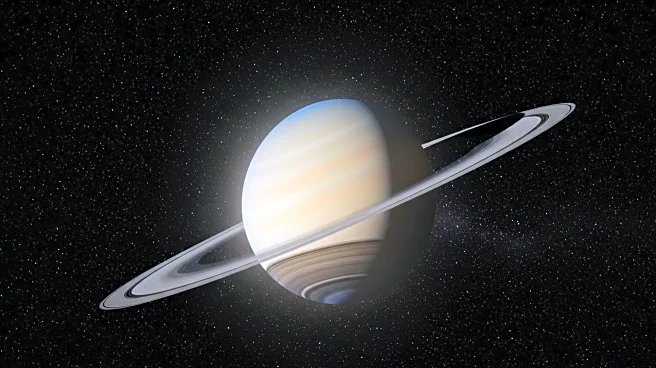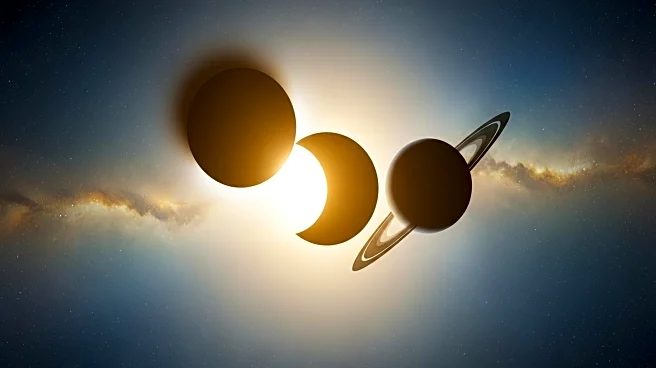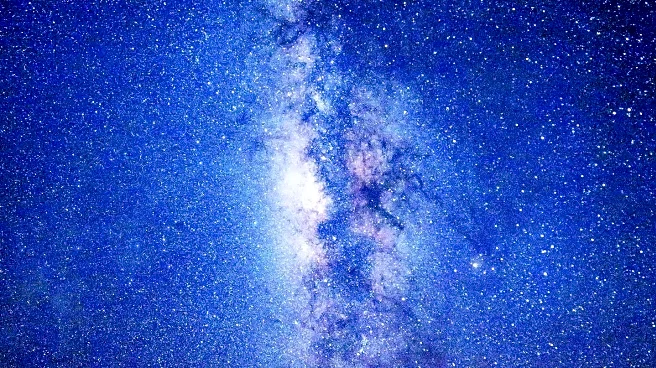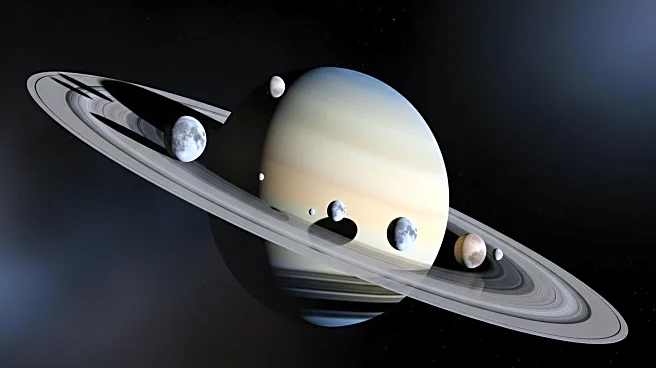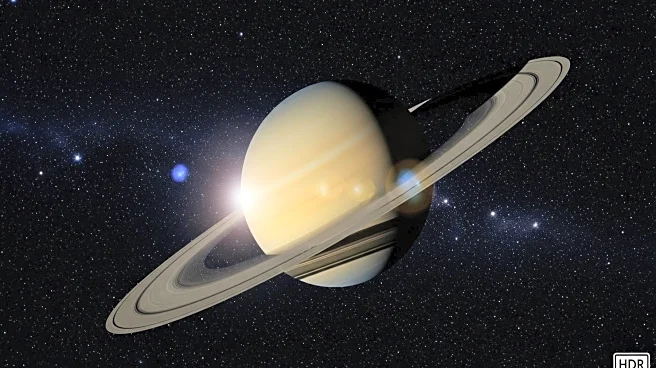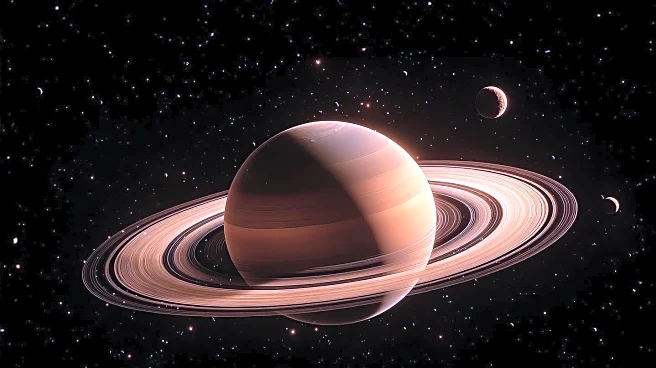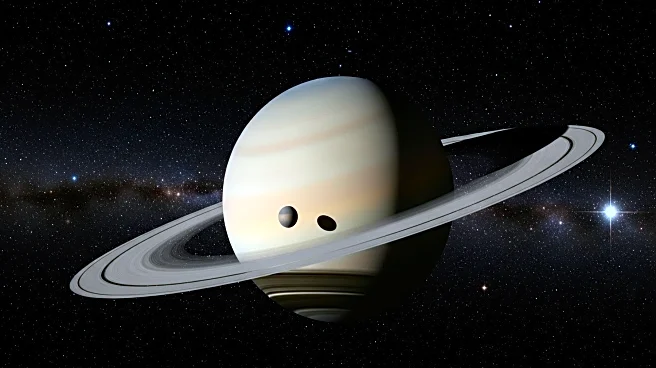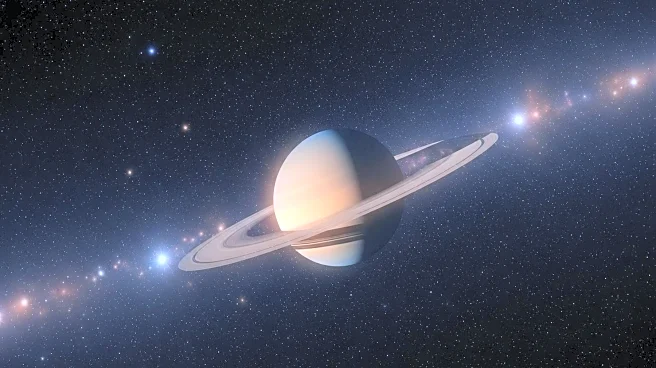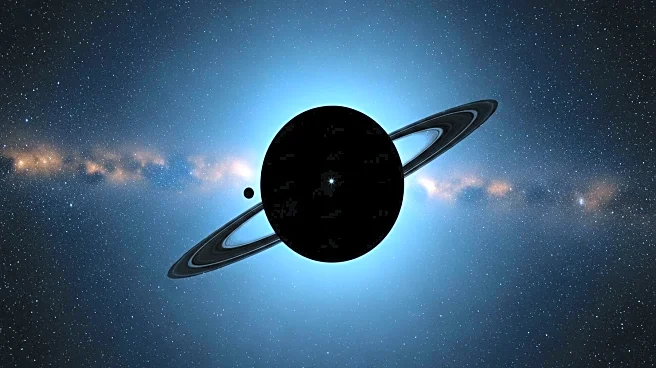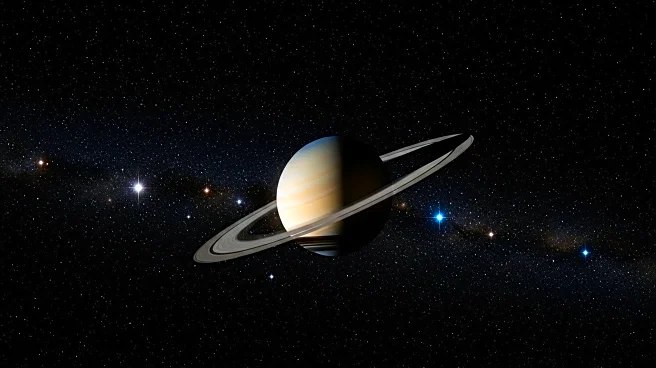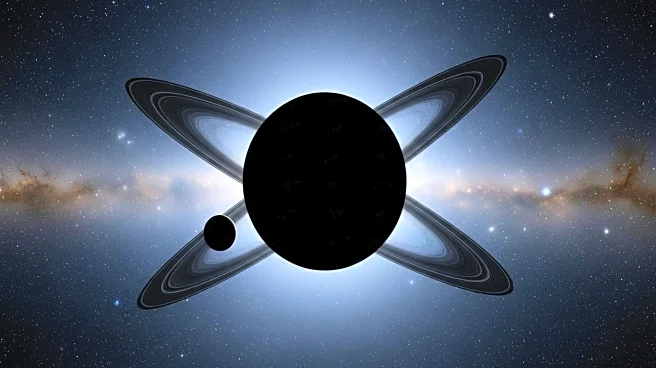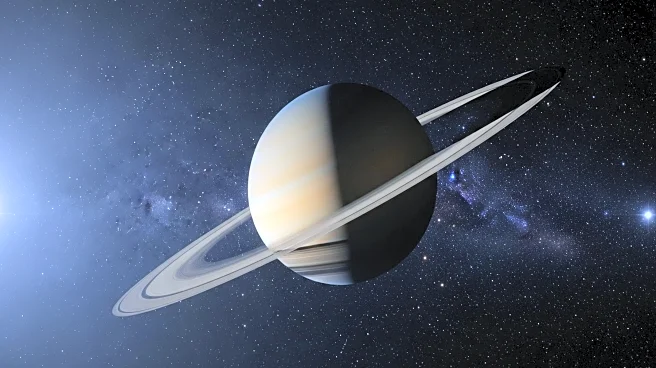What is the story about?
What's Happening?
Saturn has reached opposition, making it the brightest point of light in the southeastern sky around local midnight. This astronomical event provides optimal viewing conditions for Saturn's rings and moons. Saturn's apparent magnitude is 0.6 in Pisces, near the Circlet asterism, with a telescopic disk size of 19 inches and rings spanning 44 inches. The rings are tilted at 1.7 degrees, offering an almost edge-on perspective. Observations of Saturn's moons, including Titan, Rhea, and Dione, are possible during this time. Tethys, another moon, underwent an occultation behind Saturn around 2:45 A.M. EDT. Additionally, Neptune, located 2.6 degrees from Saturn, is approaching its own opposition on September 23.
Why It's Important?
The opposition of Saturn is significant for astronomers and sky watchers as it provides a rare opportunity to observe the planet's features in detail. The event allows for enhanced visibility of Saturn's rings and moons, which are not always easily observable. This occurrence is particularly important for scientific research and public interest in astronomy, as it can lead to new discoveries and increased engagement with celestial phenomena. The proximity of Neptune's upcoming opposition adds to the excitement, offering a chance to observe two major planets in optimal conditions within a short timeframe.
What's Next?
Following Saturn's opposition, astronomers and enthusiasts will prepare for Neptune's opposition on September 23. This will provide another opportunity for detailed observation of a distant planet. The events may lead to increased public interest and educational activities related to astronomy. Observatories and amateur astronomers are likely to continue monitoring these planets to gather data and share findings with the scientific community and the public.
Beyond the Headlines
The opposition of Saturn and Neptune highlights the importance of celestial events in fostering interest in science and education. These occurrences can inspire future generations to pursue careers in astronomy and related fields. Additionally, they offer a chance to reflect on the vastness of the universe and humanity's place within it, promoting a sense of wonder and curiosity.
AI Generated Content
Do you find this article useful?
